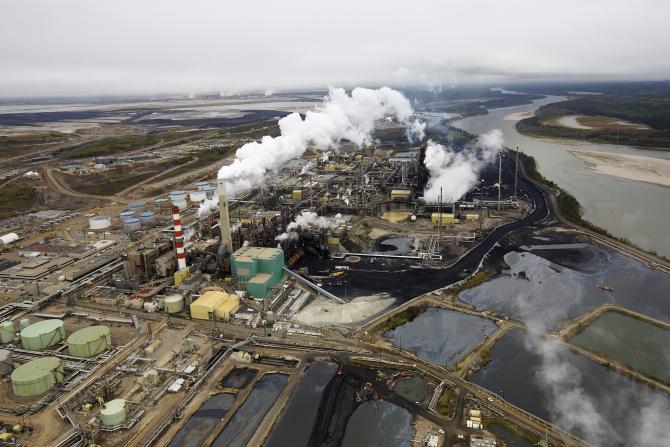
CANADIAN OIL INVESTMENTS DOWN

Investment in Canada's oil and gas industry is forecast to fall again this year as companies continue to respond to the fall in prices by cutting back on drilling and developing new facilities.
The decline comes as the price of the heavy crude produced from the oil sands of Alberta has fallen so low that some companies are losing money on every barrel they sell, and are looking at ways to cut production.
The Canadian Association of Petroleum Producers, which represents the industry, forecast that it would invest C$42bn (US$29.5bn) this year, 13 per cent less than last year and 48 per cent less than in 2014. That is a steeper decline than investment in oil and gas production worldwide, which is expected to drop by 40 per cent over 2014-16, according to Wood Mackenzie, the energy research company.
The Capp forecasts that investment in Canada's "conventional" oil and gas sector will fall 55 per cent between 2014 and this year, a faster decline than for the oil sands, where it is predicting a 38 per cent drop.
Projects in the oil sands are often large commitments that are expensive to stop. At least 17 planned developments were delayed or cancelled last year, according to ARC Financial, but while Royal Dutch Shell stopped its Carmon Creek project, where work had already started, others that were under way have continued construction.
The International Energy Agency, the watchdog backed by rich countries, forecast this month that Canada's oil production would keep rising in spite of low prices, going from 4.28m barrels a day in 2014 to 4.49m b/d this year.
However, the economics of Alberta's oil sands are highly unfavourable at today's crude prices. The region is one of the world's most expensive sources of oil, with new projects needing on average a Brent crude price of about $80 a barrel to be commercially viable, according to Rystad Energy, a consultancy. Brent was trading at about $31 a barrel on Monday.
Oil prices have now fallen so far that some existing oil sands projects are not even covering their operating costs, according to Jackie Forrest, an analyst at ARC Financial.
Heavy crude produced in the oil sands trades at a deep discount to lighter blends such as Brent because it is more expensive to refine into products. Western Canada Select, the benchmark for oil sands crude, was trading at $17.22 a barrel on Monday, and touched a low of $14.50 last week.
Ms Forrest said even the most efficient "in situ" projects, where the heavy oil is melted with steam and pumped out of wells, had operating costs of about $10 a barrel. With transport costs of about another $5 a barrel, that means some producers are selling at a loss.
Companies have been slow to shut production, however, because doing so would risk damaging equipment and the oilfield.
If production at an in situ project is shut down, water in the steam pipes can freeze, fracturing them and creating huge bills for repairs.
However Connacher Oil and Gas, a small Canadian oil sands producer, said last week that "in light of exceptionally low commodity prices" it would cut production at its Great Divide project in Alberta by about a half, from 7,000-8,000 b/d this month to 3,000-4,000 b/d in February and March, while keeping its plants in operation and carrying on with maintenance.
Skip York of Wood Mackenzie said other companies in the oil sands were looking at cutting production to reduce their losses.
"They want to know how low they can take production and not damage the reservoir," he said.
-----
More:
CANADA'S LONG-TERM EFFECTIVENESS




